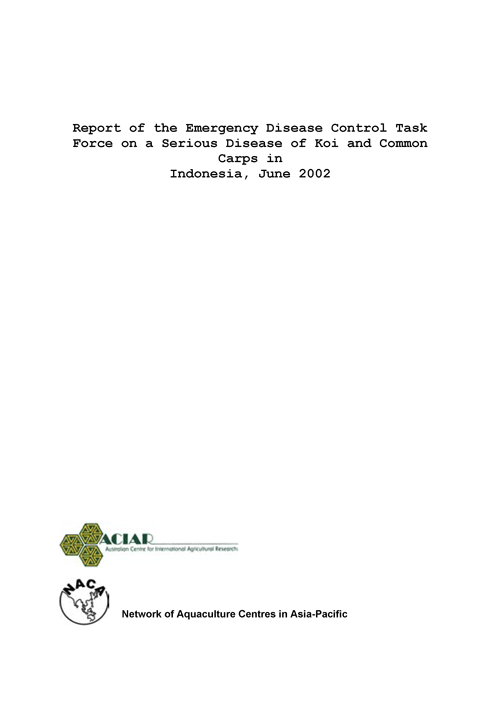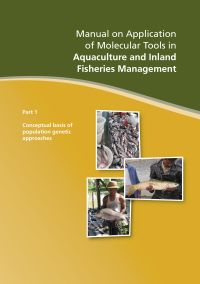Report of the Emergency Disease Control Task Force on a Serious Disease of Koi and Common Carps in Indonesia, June 2002
17 February 2004 | 761 Downloads | .pdf | 195.83 KB | Freshwater finfish, Health and Biosecurity, Indonesia
An Emergency Disease Control Task Force on a Serious Disease of Koi and Common Carps in Indonesia was organised by NACA in June 2002 at the request of the Government of Indonesia. The Task Force conducted an emergency assessment of the disease situation in July through field observations (i.e., field visits, local/district officials and farmer interviews) and laboratory examinations (e.g., histopathology, virology, PCR, and EM) of collected samples.
The Task Force collected vital information about the disease occurrence, but could not make a confirmatory diagnosis of the aetiological agent/s involved in the disease under consideration.
The Task Force findings revealed that an infectious agent/s is involved in the current outbreak (based on epidemiological observations such as sudden onset, rapid spread, specificity to koi and common carp, analogy with Koi herpes virus (KHV) outbreaks), that the disease was introduced to Indonesia through fish importation and spread into other areas through fish movements. The observed pathology did not reveal a diagnosis of the earlier suspected KHV, no virus could be isolated nor virions observed through electron microscopy. However, KHV was detected from all case samples which indicates that KHV might have played a role in the observed mortalities.
This serious disease outbreak in Indonesia will have a huge trade implication that will affect the high value koi carp and the regionally important food fish common carp. A careful diagnosis is essential and this will be the subject of future follow-up work as a matter of priority. The Task Force findings recommends that this serious outbreak of koi and common carp be called ‘Mass mortality of koi and common carp’ until a clear association with KHV or any other specific disease can be established.
Follow-up actions are on-going to further assist the Government of Indonesia in identifying measures to reduce the risks of the disease and its potential spread to neighbouring countries.
Creative Commons Attribution.

